 |
 |
 |
| |
Potential for HIV transmission among adolescents and young adults receiving antiretroviral therapy - 'PrEP missed opportunities'
|
| |
| |
Reported by Jules Levin
IAS 2017 Paris France July 23-26
"In this conservative model of transmission potential, 16% of ART-treated AYA in care were episodically at high risk of HIV transmission, demonstrating the limits of treatment as prevention in this setting. A baseline history of STI conferred higher risk of transmitting HIV, emphasizing the need for secondary prevention interventions targeting both ART adherence and sexual risk reduction for HIV-positive youth."
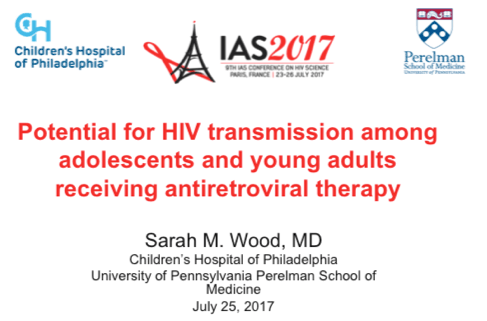
Cohort is predominately African Amercan, cisgender males, with behaviorally acquired HIV, nearly 50% of whom had an STI at or before entry to HIV care.
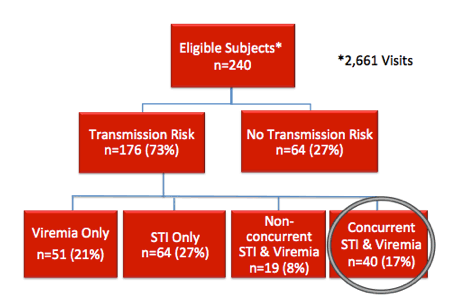
abstract
Background: Adolescents and young adults (AYA) living with HIV have lower rates of virologic suppression and higher rates of sexually transmitted infections (STIs) than older adults, which increases HIV transmission potential. We aimed to identify the proportion of participants with, and risk factors for, high HIV transmission potential within a cohort of HIV-positive AYA.
Methods: Retrospective cohort study of HIV-positive, antiretroviral therapy (ART)-treated, AYA, ages 13-24, at a U.S. adolescent HIV clinic from 2002-2015. We included all visits with viral load (VL) measurement after ART initiation. High transmission potential was defined as incident STI (Neisseria gonorrhea, Chlamydia trachomatis or Treponema palladium) with concurrent VL >1500 copies/ml. Generalized estimating equations (GEE) were used to calculate odds ratios (ORs) and 95% confidence intervals (CI) for hypothesized risk factors for high transmission potential, including age, gender, insurance status, sexual orientation, race and history of STI at entry to care.
Results: Participants (n=251) were followed for a median of 3.2 years (IQR 1.5-5.3), contributing 2,860 visits. Participants were 87% African-American (n=218), and 73% men and transgender women who have sex with men (n=182) and 48% (n=120) had a history of STI at entry to care. The median visit age was 21 years (IQR 19-23). Incident STI was detected in 68% (n=166) of participants comprising 15% (n=299) of visits. Participants were viremic (VL >1500 copies/ml) at 27% (n=640) of visits. High transmission potential occurred at least once in 16% (n=39) of participants and 3% of visits. In the final GEE model, history of STI at or before entry to HIV care conferred a nearly four-fold increased odds of high transmission potential (OR 3.8, 95% CI: 2.0-7.1, p< 0.001). There was no significant association between age, gender, sexual orientation, race, or insurance status and high HIV transmission potential.
Conclusions: In this conservative model of transmission potential, 16% of ART-treated AYA in care were episodically at high risk of HIV transmission, demonstrating the limits of treatment as prevention in this setting. A baseline history of STI conferred higher risk of transmitting HIV, emphasizing the need for secondary prevention interventions targeting both ART adherence and sexual risk reduction for HIV-positive youth.
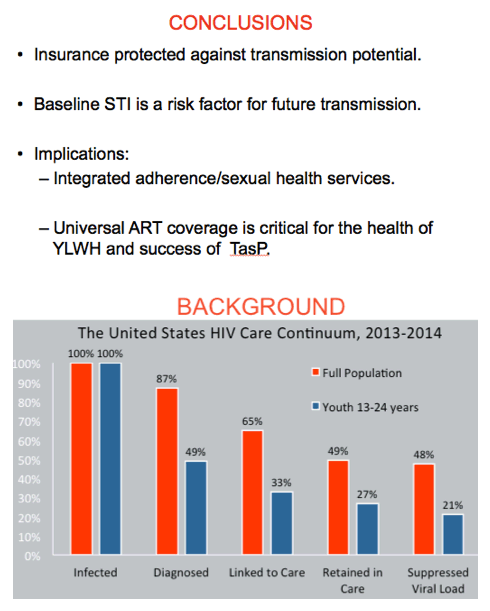
While AYA in the U.S. are disproportionally infected with HIV, they face significant care disparities.
The final stage of virologic suppression is critical for preventing disease prevention, but is also key for prevention as suppression can eliminate the risk of transmission. This forms the cornerstone of the current TasP approach.
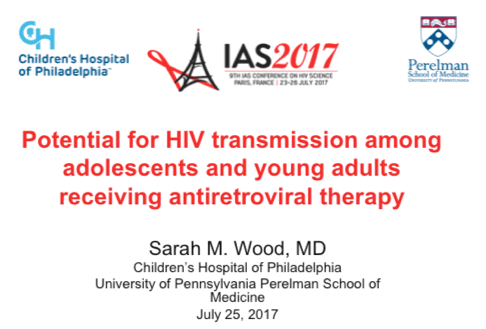
However, sexual transmission doesn’t occur with viremia alone, but at the intersection of viremia and characteristics of the sex act that potentiate transmission such as condomless sex, PrEPless sex or sex in the setting of an STI which increases genital tract VL and inflammation
There is a critical need to identify modifiable risk factors for secondary transmission, including viremia + sexual risk, among youth living with HIV.
Instead of focusing only on patient characteristics, we need to modifiable examine health systems factors which can be harnessed to decrease transmission risl.
Insurance coverage has been associated with increased ART coverage, increased testing of STIs and increased retention in care , however it is unknown if it is protective against transmission.
The role of health systems factors, such as insurance coverage, in transmission risk is unknown.
High risk sexual behavior: condomless or PrEP-less intercourse. Magnified by STI which increases genital tract inflammation and the HIV viral load in genital tract fluids.
When we think about modifiable risk factors, we often think about the patient level, however it is equally important to look at the health systems level
Insurance coverage has been associated with increased ART coverage, increased testing of STIs and increased retention in care.
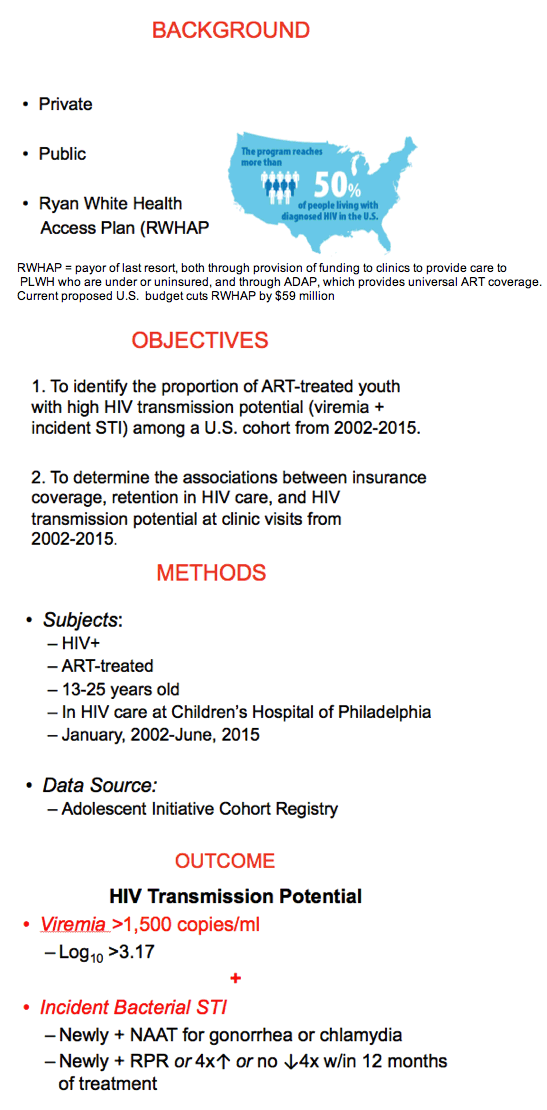
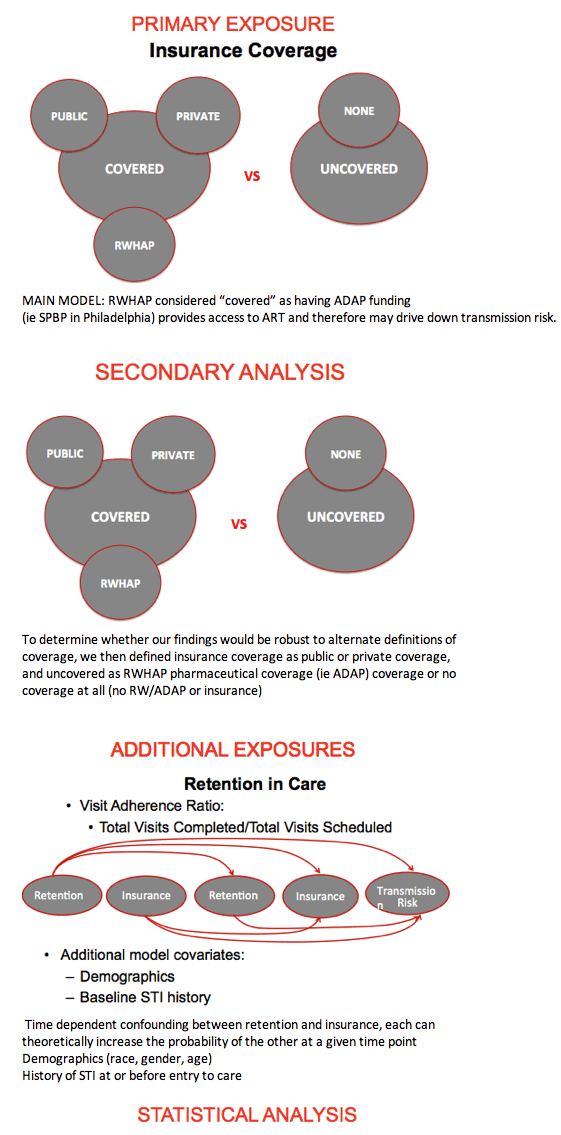
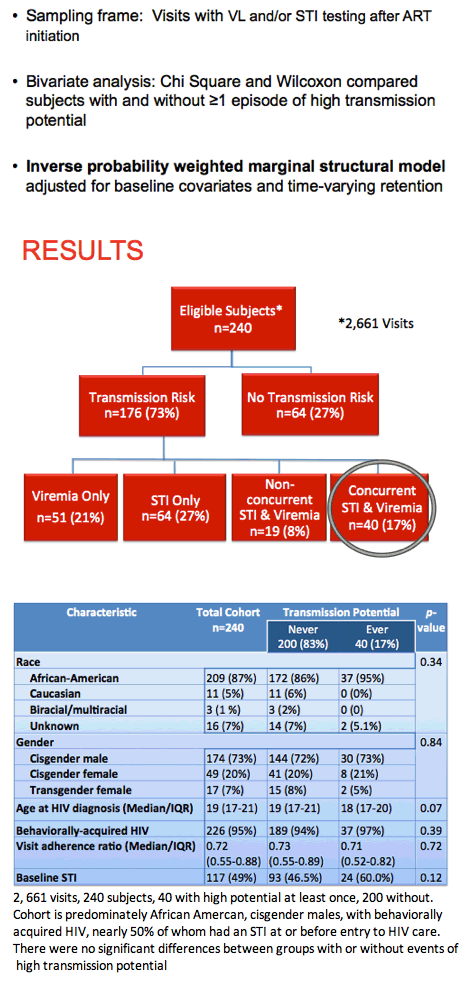
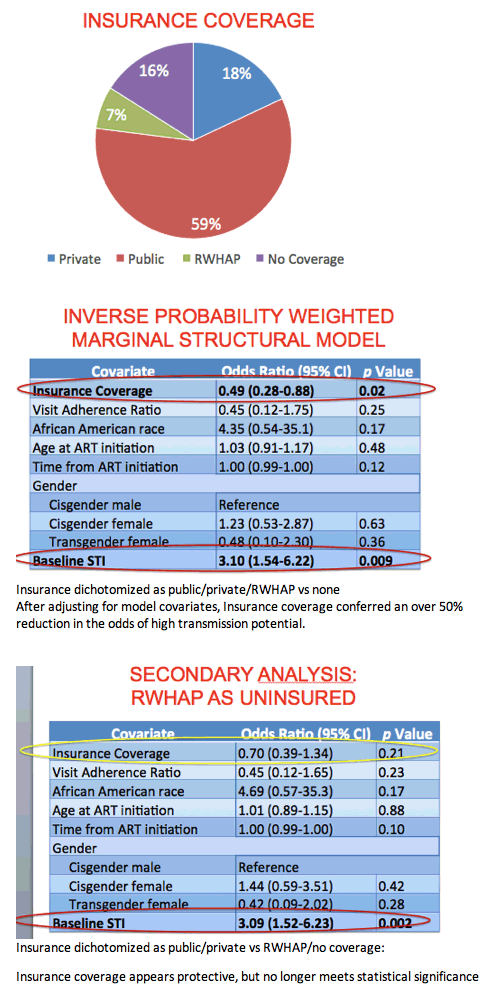
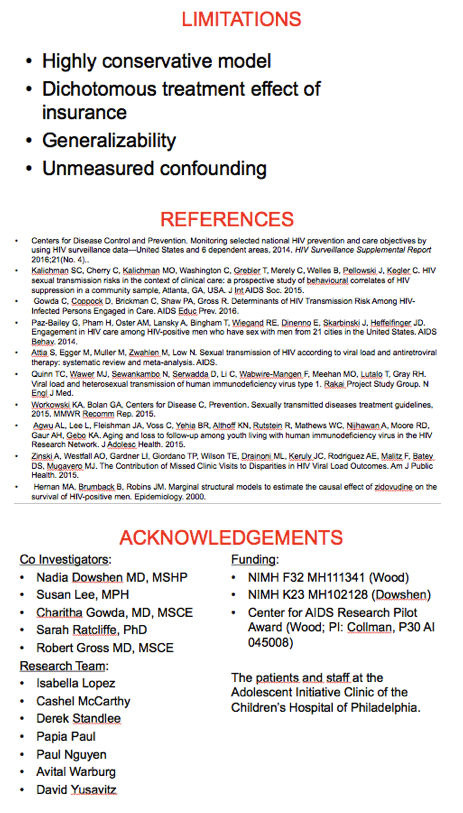
|
| |
|
 |
 |
|
|